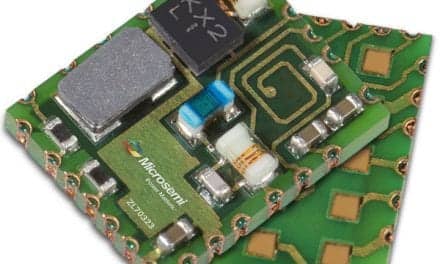As unobtrusive as a wristwatch, actigraphs can be the best option for tracking sleep-wake patterns in certain populations and for select disorders. While not measuring as many parameters as polysomnography or home sleep tests, these devices have key advantages, which are highlighted in the research studies below.
Longitudinal Studies
In order to test the hypothesis that the loss of neurons in the human intermediate nucleus correlates with sleep loss and fragmentation, researchers studied 45 older adults from the Rush Memory and Aging Project, a community-based cohort study of aging in which participants undergo annual testing and agree to brain donation upon death. The study began in 1997, and in 2005, biennial actigraphy was added to the protocol for all interested surviving participants and new enrollees.
“Since 2005, most of the subjects in the Memory and Aging Project have been undergoing actigraphic recording every two years. This consists of their wearing a small wristwatch-type device on their non-dominant arm for seven to 10 days,” says first author Andrew S.P. Lim, MD, in a release. The waterproof actigraphs are worn 24 hours a day and monitor all movements, large and small, divided into 15-second intervals. “Our previous work had determined that these actigraphic recordings are a good measure of the amount and quality of sleep,” Lim says.
After death, the subjects’ brains were examined to identify ventrolateral preoptic neurons and then the researchers correlated the actigraphic rest-activity behavior of the individuals in the year prior to their deaths with the number of remaining ventrolateral preoptic neurons at autopsy. “We found that in the older patients who did not have Alzheimer’s disease, the number of ventrolateral preoptic neurons correlated inversely with the amount of sleep fragmentation,” says senior author Clifford B. Saper, MD, PhD. “The fewer the neurons, the more fragmented the sleep became.” The subjects with the largest amount of neurons spent 50% or more of total rest time in the prolonged periods of nonmovement most likely to represent sleep, while subjects with the fewest ventrolateral preoptic neurons spent less than 40% of total rest time in extended periods of rest. The results further showed that among Alzheimer’s patients, most sleep impairment seemed to be related to the number of ventrolateral preoptic neurons that had been lost.1
Motor Activity with Sleep
In addition to being an objective noninvasive way to assess sleep-wake rhythms, actigraphs can record motor activity of the upper arm. So in studies where both sleep and movement need to be tracked, the devices are a fit.
French researchers recently studied the ability of wrist actigraphy to quantify motor behavior disorders in patients, including a large number with dementia and behavioral and psychological symptoms, admitted to a geriatric hospital intermediate care unit. The actigraphs summarized motor activity every second, and software grouped the data and provided numeric and graphical representations of the data. The software also estimated total sleep time and the number of sleep periods.
According to the abstract, the researchers concluded, “Wrist actigraphy can be used to record motor activity in elderly patients with dementia especially in those with apathy and aberrant motor behavior.”2
Infant Populations
Home sleep testing is not typically used with pediatric populations, and though polysomnography can be used, accommodating children in a sleep center requires unique equipment and a highly trained staff. Therefore, for sleep research with infants and young children, actigraphy becomes a practical option.
“The fact that poor infant sleep predicts later attention and behavior irregularities has never been demonstrated before using objective measures,” says Avi Sadeh, of a study that his team led using actigraphy. The initial study assessed the sleep patterns of 87 1-year-olds. The children and parents revisited the lab when the infants were 3- to 4-years old. According to the study, “Night-wakings of self-soothing infants go unnoticed by their parents. Therefore, objective infant sleep measures are required when assessing the role of sleep consolidation or sleep fragmentation and its potential impact on the developing child.”
The study revealed significant predictive and concomitant correlations between infant sleep and toddler attention regulation and behavior problems. The study points to significant ties between sleep quality markers at 1 year of age and attention and behavior regulation markers 2 to 3 years later.3
Sleep Diary Complement
Because actigraphy is ideal for measuring sleep over multiple days, weeks, or even months, it is often the modality of choice for assessing circadian rhythm disorders such as shift work disorder. When diagnosing circadian rhythm disorders, sleep diaries are also commonly used—and actigraphy works well as an objective complement to the subjective diary.
Portuguese researchers recently evaluated sleep deprivation and its effects on young physicians in relation to concentration capacity and psychomotor performance using actigraphy. The study divided the young physicians into two groups: a non-sleep deprived group and a sleep deprived group (minimum 12 hours of night work/week). The researchers used the Pittsburgh Sleep Quality Index to screen the presence of sleep pathology and the Epworth Sleepiness Scale to evaluate subjective daytime sleepiness. Actigraphy and sleep diaries were used to assess sleep hygiene and standard sleep-wake cycles. To demonstrate the effects of sleep deprivation, they applied Toulouse-Piéron’s test (concentration test) and a battery of three reaction time tasks after the night duty.
In the abstract, the researchers observed, “Acute sleep deprivation resulting from nocturnal work in medical professions is associated with a reduction in attention and concentration and delayed response to stimuli. This may compromise patient care as well as the physician’s health and quality of life.”4
Sree Roy is editor of Sleep Review.
REFERENCES
1. Lim ASP, et al. Sleep is related to neuron numbers in the ventrolateral preoptic/intermediate nucleus in older adults with and without Alzheimer’s disease. Brain. Aug 2014. First published online: 20 August 2014. http://brain.oxfordjournals.org/content/early/2014/08/11/brain.awu222
2. Valembois L, et al. Wrist actigraphy: A simple way to record motor activity in elderly patients with dementia and apathy or aberrant motor behavior. J Nutr Health Aging. 2015;19(7):759-64.
3. Sadeh A, et al. Infant sleep predicts attention regulation and behavior problems at 3–4 years of age. Dev Neuropsychol. 2015;40(3):122-37.
4. Sanches I, et al. Effects of acute sleep deprivation resulting from night shift work on young doctors. Acta Med Port. 2015;28(4):457-462.




